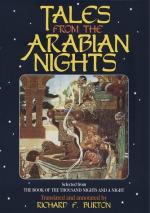In a note appended to this tale, Croker cites the following from Grimm’s “Deutsche Sagan,” vol. i. p. 290: A man once dreamed that if he went to Regensburg and walked on the bridge he should become rich. He went accordingly; and when he had spent near a fortnight walking backwards and forwards on the bridge, a rich merchant came up to him wondering what he was doing here every day, and asked him what he was looking for. He answered that he had dreamed if he would go to the bridge of Regensburg he should become rich. “Ha!” said the merchant, “what do you say about dreams?—Dreams are but froth (Trume sind Schaume). I too have dreamed that there is buried under yonder large tree (pointing to it) a great kettle full of money; but I gave no heed to this, for dreams are froth.” The man went immediately and dug under the tree, and there he got a treasure, which made a rich man of him, and so his dream was accomplished.—The same story is told of a baker’s boy at Lubeck, who dreamed that he should find a treasure on the bridge; there he met a beggar, who said he had dreamed there was one under a lime-tree in the churchyard of Mollen, but he would not take the trouble of going there. The baker’s boy went, and got the treasure.—It is curious to observe that all the European versions of the story have reference to a bridge, and it must have been brought westward in this form.
The Quest of the Image.—It has only now occurred to my mind that there is a very similar story in the romance of the Four Dervishes ("Kissa-i-Chehar-Darwesh"), a Persian work written in the 13th century, and rendered into Urdu about 80 years ago, under the title of “Bagh o Bahar” (Garden of Spring), of which an English translation was made by L. F. Smith, which was afterwards improved by Duncan Forbes. There the images are of monkeys—circumstance which seems to point to an Indian origin of the story—but the hero falls in love with the spotless girl, and the jinn-king takes possession of her, though he is ultimately compelled to give her up.—The fact of this story of the quest of the lacking image being found in the Persian language is another proof that the tales in The Nights were largely derived from Persian story-books.




